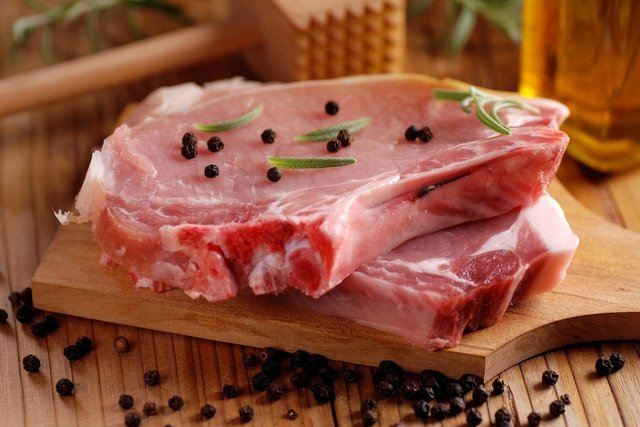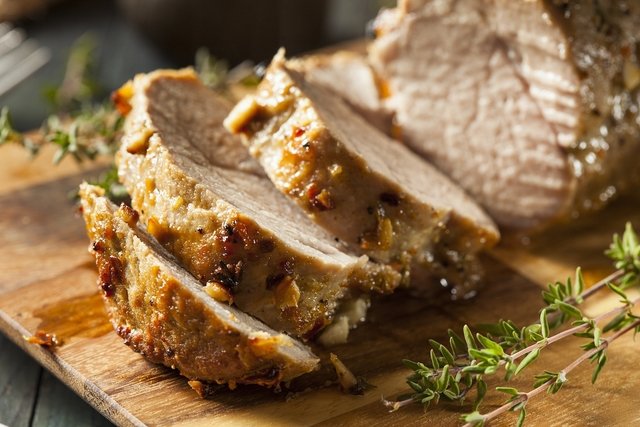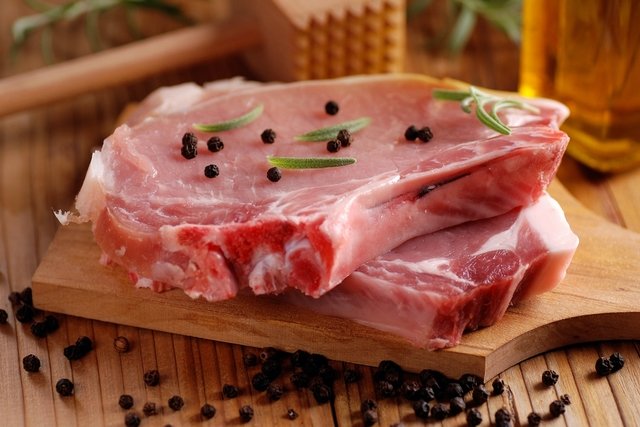Eating pork is not harmful to your health, as long as it is well cooked, as proper cooking prevents the transmission of cysticercosis, a disease that is easily transmitted by pork and can affect the nervous system, causing convulsions and problems. mental.
Furthermore, this type of meat is rich in good (unsaturated) fats, which are good for the heart, and contains less cholesterol than beef, making it a good option, when consumed in moderation, to maintain a balanced diet.
It is important to pay attention to the cut of the meat, as pieces such as bacon and ribs are rich in fat and, therefore, are not recommended for a weight loss or weight maintenance diet.

How to consume pork
Although pork is not harmful to your health, it should not be consumed in excess, especially if it is the fattiest parts of the animal.
Thus, like all red meat, ideally this meat should only be consumed 2 to 3 times a week, as over time, if consumed in excess, it can increase the risk of heart problems. See 5 other reasons to eat less red meat.
How to choose the best pork
It is important to choose pork of known origin, preferably industrialized, in which the animals’ health is controlled to avoid the transmission of diseases.
Furthermore, you should prefer cuts with less fat, such as steak and loin, and avoid very fatty parts of the pork, such as bacon, bacon, ham and ribs.
How to prepare meat healthily
To prepare pork, you should prefer lean cuts and remove all visible fat before preparation, as cooking causes the fat to penetrate the meat, increasing calories.
It is also important to prefer cooked or roasted preparations, avoiding fried foods and the use of fatty sauces, such as white and barbecue sauces. Furthermore, it is not necessary to wash the meat before preparing it, as water does not eliminate contamination by diseases, only causing important nutrients in the food to be lost.
Grilled sirloin recipe with yogurt and herbs

Although choosing a meat with less fat, such as sirloin, may seem to have less flavor, they can be prepared following recipes like this, which help to enhance the flavor without harming your health.
This recipe feeds up to 4 people:
Ingredients
- 2 tablespoons of olive oil;
- 1 tablespoon of tomato sauce;
- ½ tablespoon of ground cumin;
- Lemon juice;
- 1 clove of crushed garlic;
- Pinch of pepper;
- 500 grams of pork loin, trimmed and fat-free;
- Salt and pepper;
- Sesame seeds;
- fresh sauce;
- 1 teaspoon of honey;
- 2 tablespoons of mint and chives;
- 85 grams of natural yogurt
How to prepare
Mix the olive oil with the tomato sauce, cumin, 1 tablespoon of lemon juice, garlic, pepper, salt and pepper in a bowl. Place the pork loin cut into pieces into the mixture and mix well. Cover the bowl and let the meat rest in the refrigerator for at least 2 hours.
To prepare the sauce, mix 2 tablespoons of lemon juice with the honey and yogurt. Finally, add the mint and chives and season with salt and pepper.
To cook the meat, remove it from the refrigerator 15 minutes beforehand and then grill it with a little olive oil, turning sides every 10 or 12 minutes. Place the grilled meat on a plate and let it cool completely. Then pour the sauce over the meat and serve.
Nutritional table of pork cuts
The nutritional information for 100 grams of each cut of pork is:
Can pregnant women eat pork?
Pregnant women can consume pork normally, but should only be extra careful with the origin of the meat, to avoid consuming animals contaminated with cysticercosis.
Another important precaution is to always consume meat that is well cooked or roasted, as proper cooking eliminates cysticercosis, in addition to washing vegetables that are to be consumed raw very carefully, as they may also be contaminated. See how to prevent cysticercosis.
Discover the myths and truths about red and white meat to make the best choice for your health.

Sign up for our newsletter and stay up to date with exclusive news
that can transform your routine!
Warning: Undefined array key "title" in /home/storelat/public_html/wp-content/plugins/link-whisper-premium/templates/frontend/related-posts.php on line 12
Warning: Undefined array key "title_tag" in /home/storelat/public_html/wp-content/plugins/link-whisper-premium/templates/frontend/related-posts.php on line 13





